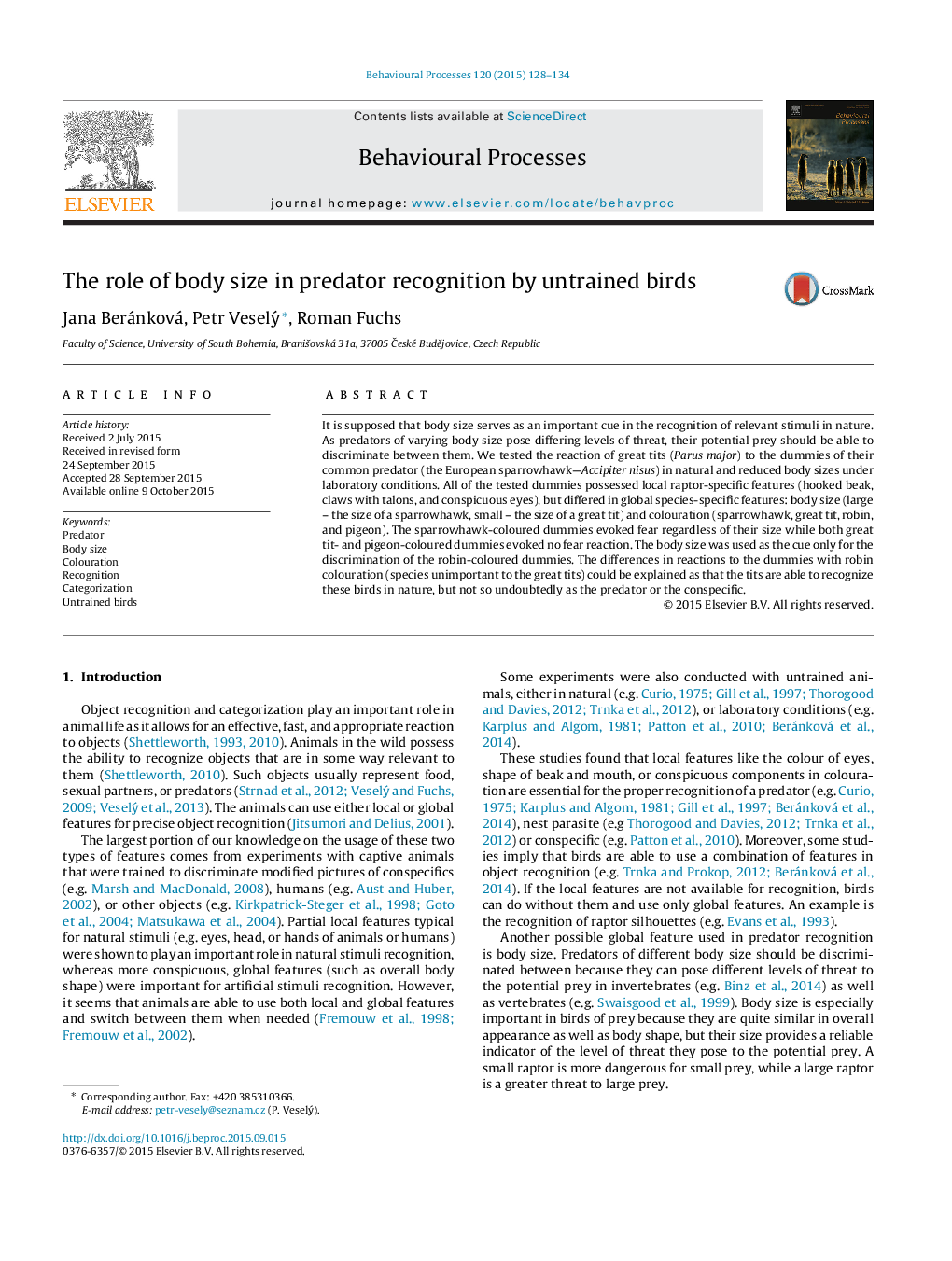| کد مقاله | کد نشریه | سال انتشار | مقاله انگلیسی | نسخه تمام متن |
|---|---|---|---|---|
| 2426504 | 1553160 | 2015 | 7 صفحه PDF | دانلود رایگان |
• We faced untrained great tits with predators with modified size and colour.
• Size had no effect on recognition of stimuli with predator colouration.
• Size had no effect on recognition of stimuli with conspecific colouration.
• Tits were able to recognize even species with low relevance to them.
It is supposed that body size serves as an important cue in the recognition of relevant stimuli in nature. As predators of varying body size pose differing levels of threat, their potential prey should be able to discriminate between them. We tested the reaction of great tits (Parus major) to the dummies of their common predator (the European sparrowhawk—Accipiter nisus) in natural and reduced body sizes under laboratory conditions. All of the tested dummies possessed local raptor-specific features (hooked beak, claws with talons, and conspicuous eyes), but differed in global species-specific features: body size (large – the size of a sparrowhawk, small – the size of a great tit) and colouration (sparrowhawk, great tit, robin, and pigeon). The sparrowhawk-coloured dummies evoked fear regardless of their size while both great tit- and pigeon-coloured dummies evoked no fear reaction. The body size was used as the cue only for the discrimination of the robin-coloured dummies. The differences in reactions to the dummies with robin colouration (species unimportant to the great tits) could be explained as that the tits are able to recognize these birds in nature, but not so undoubtedly as the predator or the conspecific.
Journal: Behavioural Processes - Volume 120, November 2015, Pages 128–134
